I’m thrilled to announce that this summer I completed the third field season of my study. This is slightly bittersweet – while I’m excited that we are done with hot fieldwork, I will miss chasing bees around the farm and the view of Mt. Hood. I’m incredibly thankful for this third season of data, as it will help account for some of the temporal variation inherent in ecological studies. In fact, pollinator communities in particular tend to be highly variable both within and across field seasons. Having three seasons of data will hopefully allow us to identify more reliable patterns of pollinator visitation between my study plants.
Lots of lab work remains, as I’m tackling the insect samples that we collected with the bee vacuum. With the help of a dissecting scope, I’m attempting to identify the each specimen to at least the taxonomic level of family to get a sense of the broader insect communities associated with each flower species in my study. It will be several months before I can share this species-richness data, but in the meantime I have bee abundance data to share with you!
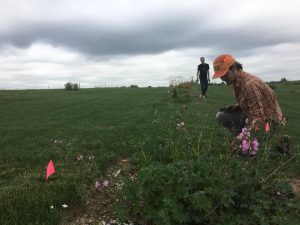
As a refresher, we performed timed pollinator observations at each plot. This consisted of observing each blooming plot for five minutes and counting all the insects that landed on open flowers. Bees were sorted to “morpho-type” (honey bee, bumblebee, green bee, and other native bee). Though this doesn’t give us species-level information on the floral visitors, it allows us to understand which plants attracted the most pollinators overall, and allows us to detect any patterns of visitation between honey bees, bumblebees, and solitary native bees. Below is a summary of some of the highlights.
2019 overall bee abundance by plant species:
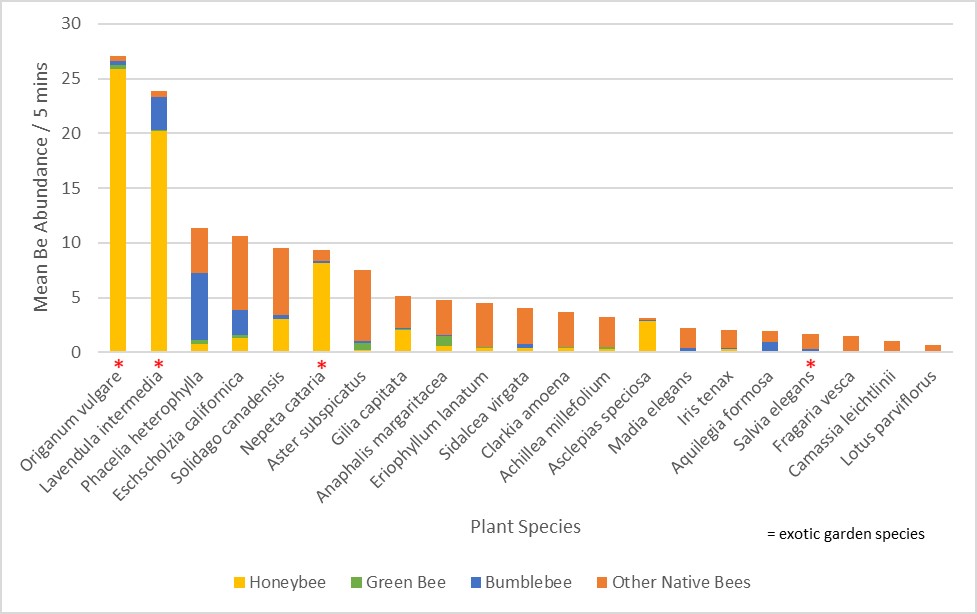
- Origanum vulgare, Lavendula intermedia, and Eschscolzia californica were top five bee plants in 2019, just as they were in 2018.
- In 2019, Phacelia heterophylla and Solidago canadensis jump into the top five, while Nepeta cataria and Gilia capitata fall out of the top five. It should be noted that Nepeta was the sixth most attractive plant, with about the same visitation level as Solidago.
- Again, similar to 2018, it appears that honey bee visitation was driving the high visitation rates of the popular exotic garden species (marked with a red asterisk), while native wildflowers were being visited more frequently by native bees.
- I’ve included the 2017 and 2018 overall abundance graphs as well, for comparison. You can see that the overall abundance was higher in 2019 for the two most popular plants, at about ~25 bees per observation period!
2017 overall bee abundance by plant species:
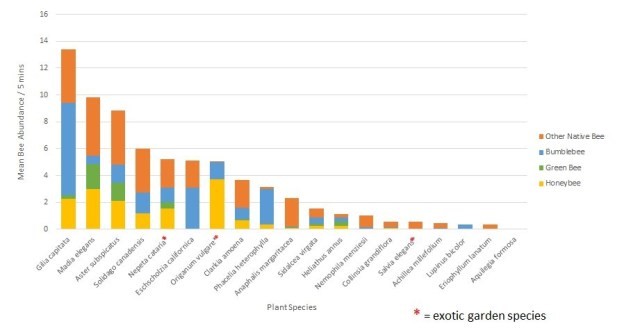
2018 overall bee abundance by plant species:
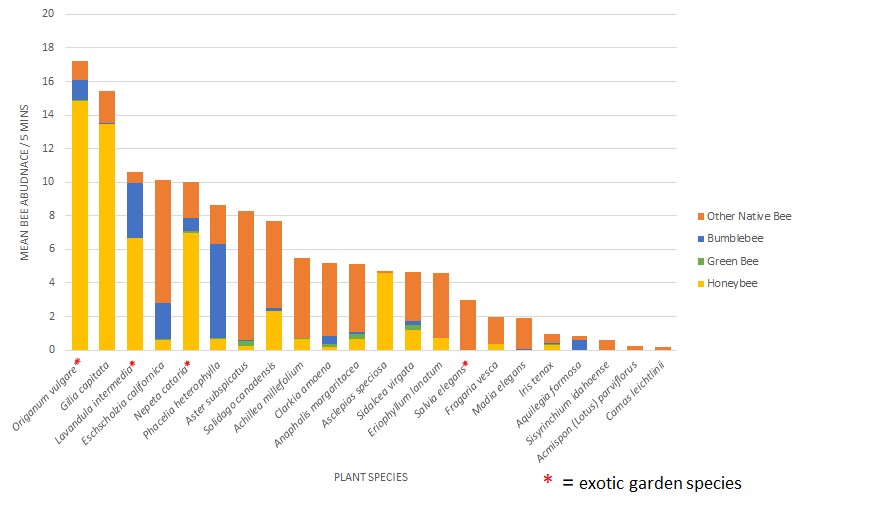
Since honey bee visitation drove the high abundance of many of the top pollinator plants, I took honey bee visits out of the data set and made a new graph, to compare which plants were most attractive to native bees.
2019 native bee abundance by plant species:

As you can see above, honey bees are excluded from the analysis, the top five most popular plant species completely reshuffles.
- Native wildflowers Phacelia heterophylla, Eschscolzia californica, and Solidago candensis are still top pollinator plants, while Aster subspicatus and Anaphalis margaritacea jump into the top five.
- The exotic garden plants fall in the rankings: Lavendula intermedia drops to the middle of the pack, while Nepeta cataria and Origanum vulgare hardly attracted any native bees at all (an average of only ~one bee per five minute observation).
- Phacelia heterophylla, Lavendula intermedia, and Eschscolzia californica attracted the most bumblebee species.
I’ve included that 2017 and 2018 native bee abundance data below for comparison.
2017 native bee abundance by plant species:
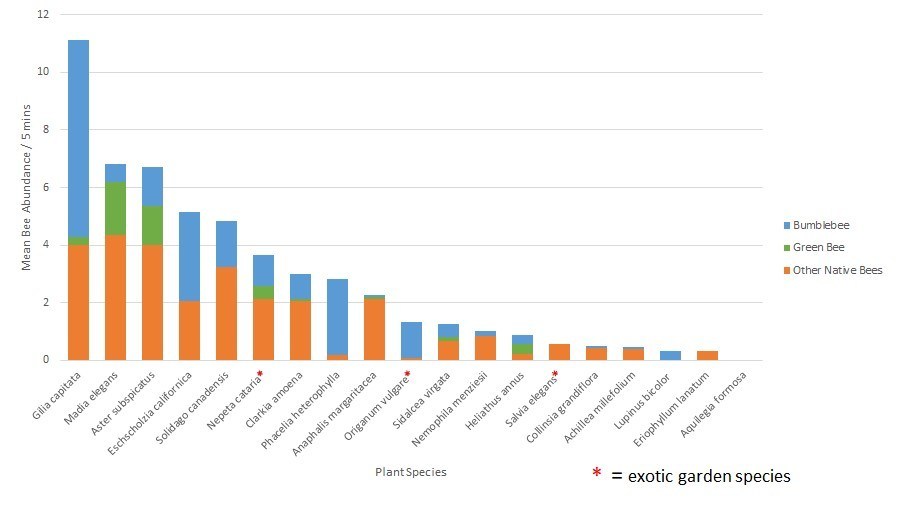
2018 native bee abundance by plant species:
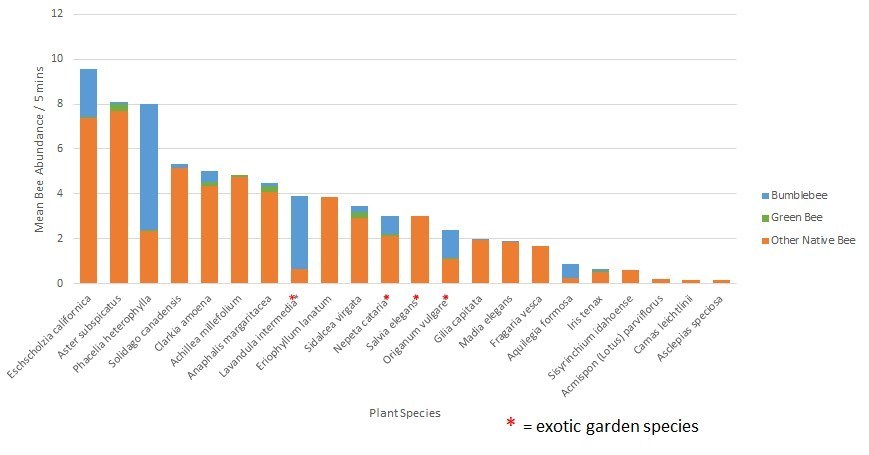
Please stay tuned for more updates on the bee species richness we collected in 2019, as well as data on the other insects (pests and natural enemies) that we collected!
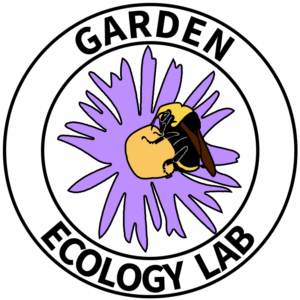
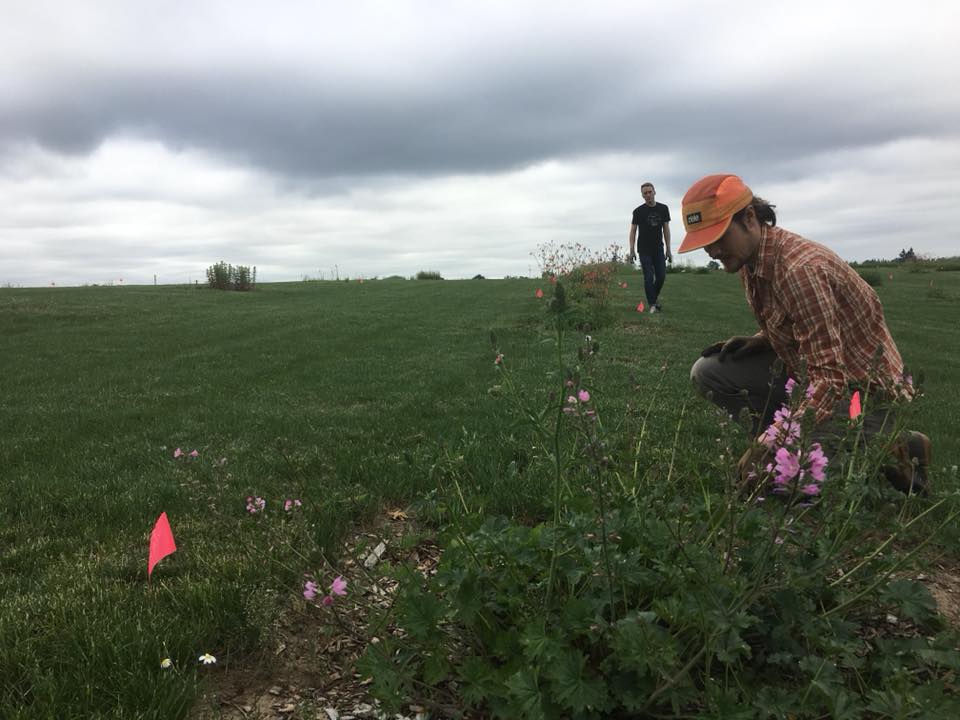

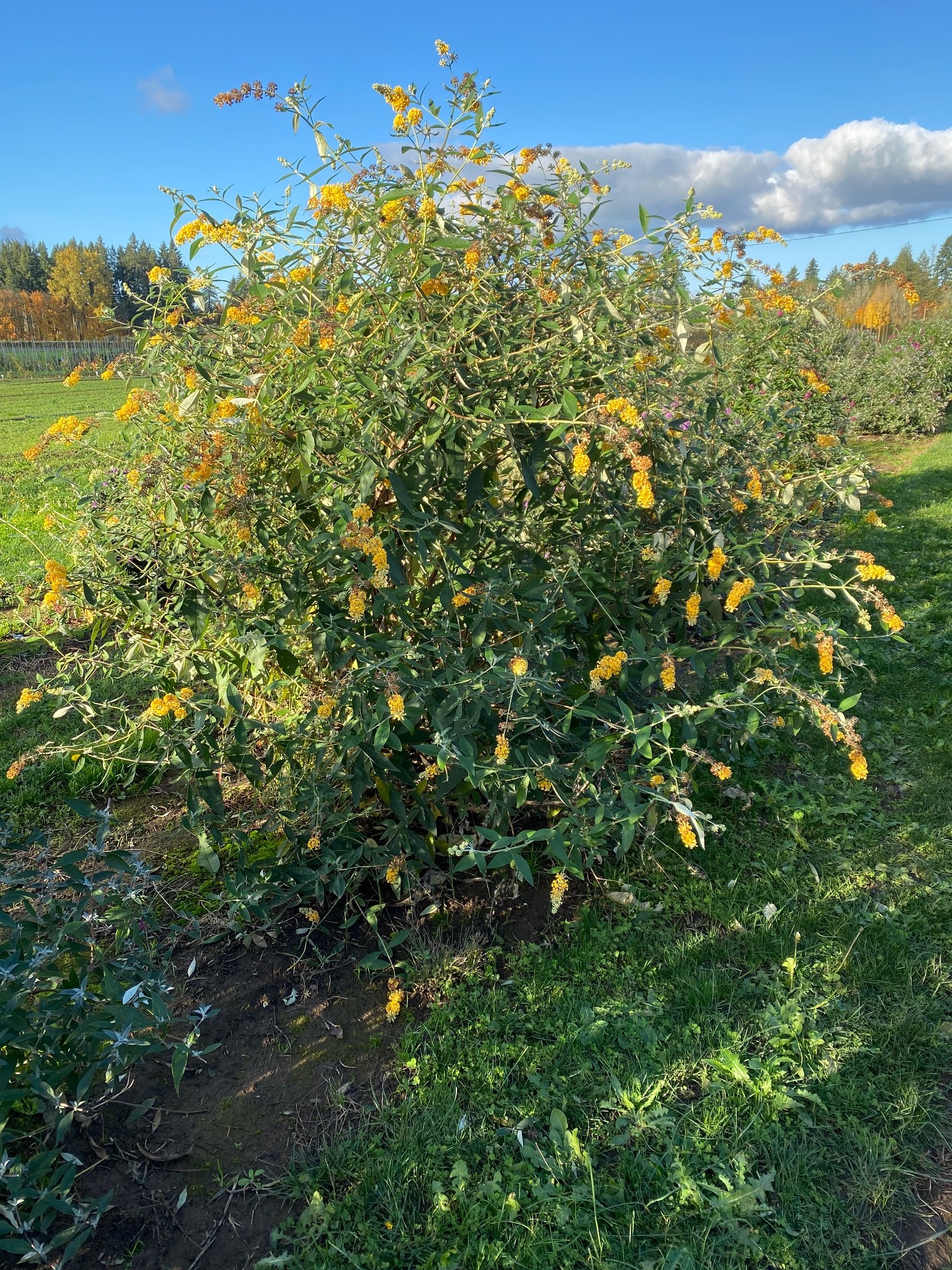


8 Comments
Add Yours →Thanks for sharing your amazing and dedicated work.🐝🙏
Well I sincerely liked reading it. This tip offered by you is very practical for proper planning.
Awesome project! Are you also looking at non-hymenopteran pollinators as well? I look forward to reading what comes out of this research.
We are looking at all pollinators and floral visitors. But, bees are surely the most numerous. For beetles and flies, we’re identifying to family. Butterflies are ID’d to species, when possible.
I was very interested in the species of plants mostly visited by native bees but I found reading the charts very difficult because of the color of the ink used for the plant species and the very small print.
Hi Jackie,
We are preparing to publish an Extension document, summarizing the results of Aaron’s study. For now, it may be helpful to refer to this sentence, which is part of a manuscript that Aaron has submitted for publication with the American Society of Hort Science: “Specifically, we identify five native wildflower species that Pacific Northwest nurseries might consider growing and marketing as pollinator plants, due to their high level of attractiveness to bees and to home gardeners: globe gilia (Gilia capitata), California poppy (Eschscholzia californica), Douglas aster (Symphyotrichum subspicatum), Oregon sunshine (Eriophyllum lanatum) and common yarrow (Achillea millefolium).”
I’ve been using your abundance charts to select the highest value natives for pollinators. Thank you!
Hi Michael,
That’s wonderful to hear, I’m glad they have been helpful!